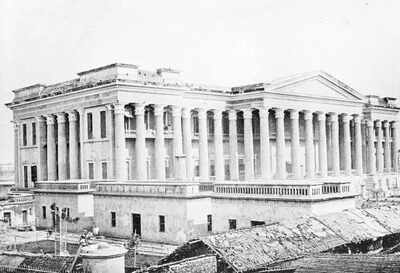
Image credit: Getty images
On January 28, 1835, as mist lingered over the colonial rooftops of Calcutta, a quiet but radical shift began inside a modest hall on College Street. Under the vision of Lord William Bentinck, Governor-General of India, an institution emerged that would rewrite the medical story of the East.
The Medical College, Bengal, now known as Calcutta Medical College, was founded not just to heal, but to transform how healing itself was understood in India.A
t a time when superstition clouded diagnosis and traditional medicine held sway, this college introduced something extraordinary: a curriculum rooted in Western medicine, taught in English, and accessible to Indians. It was the first of its kind in Asia.
The birth of scientific medicine in India
This was not merely a medical college. It was a cultural battlefield. In its early years, Calcutta Medical College trained Indian students to dissect cadavers, study human anatomy, and engage with contemporary science. This was unthinkable in many Indian communities at the time.In 1836, Madhusudan Gupta, one of its first Indian students, made history. He became the first Indian to dissect a human corpse as part of formal education in Western medicine.
His act was not just academic. It was an open challenge to centuries of orthodoxy. The dissection table became a symbol of courage and scientific awakening.
A hotbed of healing and dissent
Medicine was not the only thing that found a home within these walls. So did rebellion. During the colonial years, Calcutta Medical College became a hub of student activism. Many of its students joined the independence movement, using their classrooms by day and protest lines by night.In 1947, Sree Dhiraranjan Sen, a student of the college, was killed during a protest on Vietnam Day. His sacrifice was recognized internationally, with the Vietnam Students’ Association in Hanoi passing a resolution in his memory. The incident captured the spirit of a generation that refused to remain passive observers.
A legacy forged in service
Over time, the college expanded not just in size, but in significance. From treating patients during the Bengal Partition riots to establishing clinics in refugee camps, its students and faculty stepped beyond hospital walls.
In 1952, led by alumni including Dr. Bidhan Chandra Roy, the college helped create the Students’ Health Home, an initiative that offered medical services to students across West Bengal.The institution has also stood tall in research and innovation. In 2023, Dr. Sudip Das from the ENT department received a patent for a low-cost medical device. In 2024, the Indian Council of Medical Research declared CMCH the best medical college in Eastern India, with an evaluation score of 70 percent.
Shaping the healers who shaped history
The alumni of Calcutta Medical College read like a who's who of Indian medical and intellectual history. The college produced Dr. Kadambini Ganguly, the first certified female physician in South Asia. It nurtured the brilliance of Dr. Upendranath Brahmachari, who discovered the treatment for kala-azar, a disease that once claimed thousands of lives.Leaders such as Ram Baran Yadav, the first President of Nepal, and Dr.
Bidhan Chandra Roy, West Bengal’s second Chief Minister, also began their journey within these walls. Even Sri Yukteshwar Giri, the renowned yogi and spiritual teacher, passed through the corridors of this institution. From science to politics to spirituality, the influence of CMCH has extended far beyond medicine.
Enduring bricks, expanding vision
Today, Calcutta Medical College & Hospital continues to operate from its grand colonial-era buildings.
The facade may be weathered, but the mission remains urgent. It treats thousands of patients daily, trains generations of doctors, and continues to expand its reach through modern research and community engagement.Despite challenges like space constraints and growing competition from newer institutions, CMCH holds its own. It was ranked 44th in India by the NIRF in 2024, yet its value cannot be measured by rankings alone.
Its significance lies in its role as the birthplace of modern medical education in India.
More than a medical college
Calcutta Medical College is more than just a historical site or an academic institution. It is a testament to India’s early steps toward scientific thought, equality in education, and public health service. It has shaped not only doctors, but dreamers and doers. It has turned colonial intent into national pride.
In an age of high-tech hospitals and Ivy League aspirations, this 190-year-old college still beats with the same quiet defiance it was born with. It stands as proof that a true legacy is not built by grandeur, but by impact.

 4 hours ago
58
4 hours ago
58




























 English (US)
English (US)